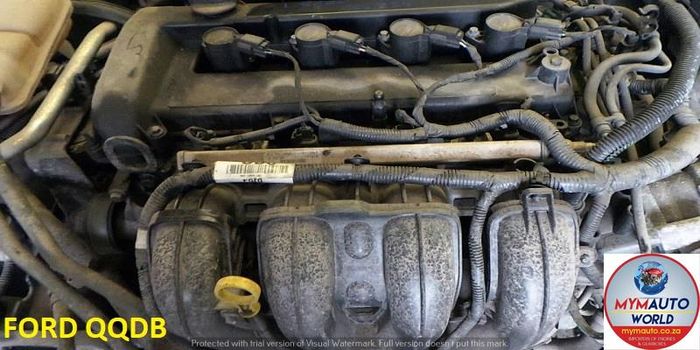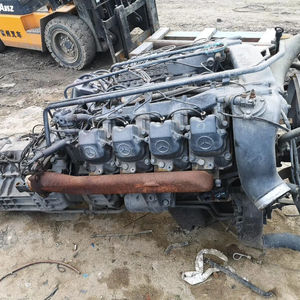Where to Discover the most effective Opel Corsa Engine for Substitute
Where to Discover the most effective Opel Corsa Engine for Substitute
Blog Article
Comprehensive Evaluation of a Subcompact Automobile's Powertrain Capabilities
In the realm of automobile engineering, the powertrain of a subcompact auto stands as a vital nexus where advancement, efficiency, and effectiveness converge. From the engine's ruthless search of optimal efficiency to the transmission's seamless choreography of power circulation, every element plays an essential role in specifying the total driving experience.
Engine Performance Analysis
In assessing the engine efficiency of the subcompact vehicle, an extensive analysis discloses its efficiency and power outcome under numerous driving problems. The subcompact auto's engine, a critical element of its powertrain system, shows good efficiency metrics.
In addition, when based on extensive testing circumstances such as high-speed velocity or uphill climbs up, the engine demonstrates strength and responsiveness. Its power outcome remains regular, providing ample velocity when needed. The subcompact cars and truck's engine is customized to satisfy the demands of city driving, where quick acceleration and nimble maneuverability are necessary.
Additionally, the engine's design incorporates modern innovations that improve its performance characteristics. Attributes like turbocharging or variable shutoff timing add to boosted power shipment and torque, improving the general driving experience. To conclude, the engine performance of the subcompact car emphasizes its capacity to provide trusted and efficient power outcome throughout numerous driving conditions.
Transmission Effectiveness Analysis
Analyzing the subcompact vehicle's transmission performance involves examining its efficiency in transmitting power seamlessly across numerous driving conditions. The performance of a transmission system is crucial as it directly affects the overall efficiency and fuel economy of the car.
One typical technique utilized to evaluate transmission efficiency is with dynamometer screening, where the power output from the engine is measured at the input and outcome shafts of the transmission. Disparities in between input and output power can suggest the degree of performance of the transmission system. In addition, real-world driving tests are performed to analyze just how the transmission carries out in functional circumstances. By assessing these facets, designers can determine locations for improvement and optimize the transmission system for much better general performance and effectiveness.
Gas Performance Evaluation
The analysis of the subcompact vehicle's fuel efficiency entails a detailed evaluation of its consumption rates under different driving conditions. Fuel performance is an essential element in examining the total efficiency and cost-effectiveness of a vehicle. By measuring the amount of gas eaten per unit range took a trip, usually revealed as miles per gallon (MPG) or litres per 100 kilometers (L/100 km), the effectiveness of the subcompact auto's powertrain can be determined.

Furthermore, improvements in modern technology, such as hybrid systems, regenerative braking, and automated start-stop systems, have actually substantially improved fuel effectiveness in contemporary subcompact vehicles. Manufacturers remain to introduce and maximize powertrain elements to enhance gas effectiveness while meeting performance needs and ecological guidelines. Assessing a subcompact car's gas effectiveness provides beneficial insights for consumers looking for economical and lasting transport services.
Acceleration and Handling Assessment
An integral element of evaluating the efficiency abilities of a subcompact car exists in examining its velocity and handling features. Velocity is essential as it determines how swiftly the car can get to desired rates, impacting general driving experience and ability to move in numerous web traffic conditions. opel corsa engine. Subcompact cars and trucks are frequently preferred for their nimbleness and dexterity, making site web velocity from grinding halt and during overtaking maneuvers important variables to think about
When it concerns handling, a subcompact auto's capability to browse edges, maintain stability at broadband, and offer a receptive guiding feel are vital. Limited city streets and winding roadways require exact dealing with to make certain vehicle driver confidence and safety. Aspects such as suspension adjusting, weight distribution, and tire hold play substantial functions in establishing a subcompact cars and truck's general handling expertise.

Powertrain Elements Overview
Upon diving right into the complexities of a subcompact auto's performance, a comprehensive evaluation of its powertrain elements is necessary to comprehend the vehicle's mechanical bases. The powertrain of a subcompact car usually includes the engine, transmission, driveshaft, differential, and axles. The engine, typically a smaller displacement four-cylinder in a subcompact automobile, is liable for generating power by shedding fuel and transforming the energy into mechanical force. The transmission, whether guidebook or automatic, transfers this power to the wheels through the driveshaft. The differential allows the wheels to rotate at different speeds when turning, enhancing ability to move. The axles send power from the differential to the wheels, enabling activity. Understanding how these elements collaborate is critical in analyzing a subcompact auto's total efficiency, efficiency, and driving characteristics. In the following area, we will certainly dig deeper right into the certain roles and interactions of each powertrain part to website link supply a thorough overview of a subcompact vehicle's powertrain capacities.
Conclusion
In final thought, the subcompact cars and truck's powertrain abilities have actually been thoroughly evaluated in regards to engine performance, transmission effectiveness, gas handling, acceleration, and effectiveness. The detailed review highlights the significance of each element functioning together perfectly to provide optimum performance. In general, the powertrain components of the subcompact automobile have actually been located to be effective and well-balanced, making it a reputable selection for chauffeurs looking for a portable and fuel-efficient lorry.
In the realm of automobile engineering, the powertrain of a subcompact car stands as an important nexus where advancement, effectiveness, and efficiency merge.In assessing the engine performance of the subcompact automobile, a detailed analysis exposes its effectiveness and power output under various driving conditions.Assessing the subcompact cars and truck's transmission efficiency involves analyzing its performance in sending power flawlessly throughout different driving conditions. Understanding how these parts function together is important in evaluating a subcompact vehicle's overall efficiency, effectiveness, and driving characteristics.In final thought, the subcompact vehicle's powertrain capacities have been thoroughly assessed in terms of engine efficiency, transmission effectiveness, fuel acceleration, handling, and effectiveness.
Report this page